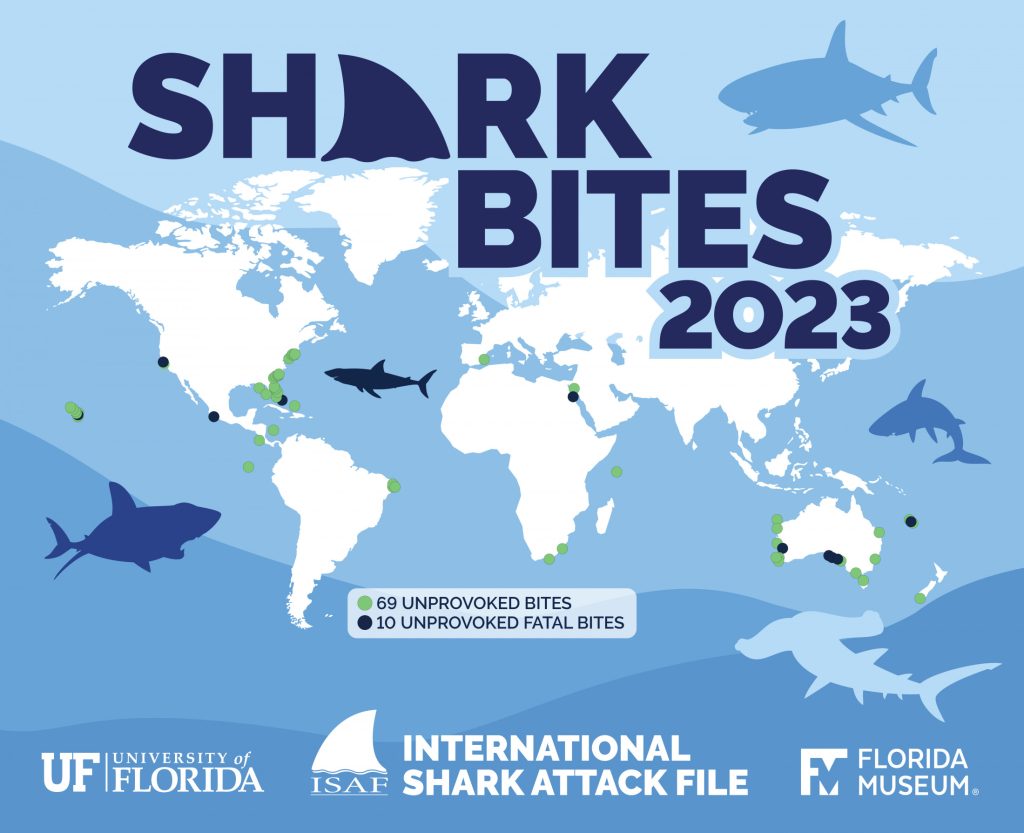“What would happen if the boat sank from its weight, and you have this tremendously powerful battery,
and the battery is now underwater and there’s a shark that’s approximately 10 yards over there … by the
way, a lot of shark attacks lately. Do I get electrocuted or do I jump over by the shark?”
“I’ll take electrocution every time. I’m not getting near the shark.”
Sharks have been receiving a lot of attention in the news recently. Besides Donald Trump’s offhanded ramble at a Las Vegas rally about the choice of dying by shark or by electrocution from a sinking electric boat, June has seen several shark attacks in the US.
This month three separate incidents occurred along Florida’s Gulf Coast, where a woman and two teenage girls were hurt in two separate shark attacks on the same day in June.
The first attack happened in the afternoon June 7 when a 45 year old woman was bitten by a shark in shallow water near Water Sound beach, Walton County Florida in the Gulf of California. The woman experienced critical injuries to her midsection and arm, and part of her arm had to be amputated. Given the nature of the injuries and location, the shark associated with the event could have been a bull shark.
Less than two hours later, about 4 miles east of the first attack, two teenage girls were attacked in shallow water with a group of friends inside the first sandbar. A 15 year old was bitten in the arm and leg while wading in the waist-deep water, eventually suffering the loss of her hand. The other girl experienced abrasions on her leg and foot by an estimated 4 to 5-foot shark of unknown species. It is unlikely that the same shark could be involved in the two separate incidents.
Depending on tide and seasons, visibility along the Florida Panhandle coastal area near Chocawattchee Bay is generally poor. When sharks are searching for prey in murky water and detect a pale object or movement, they will investigate, often biting a hand, foot or appendage, before letting go. The local Police and County Sheriff’s conducted a comprehensive aerial search along the coast reported a notable presence of sharks, specifically bull sharks, near the first sandbar. Bull sharks are often considered to be among the most dangerous sharks to humans because they frequent shallow water, their aggressive tendencies and ability to migrate into inlets and rivers.
Florida has the distinction of having the most shark attacks globally. According to the University of Florida’s International Shark Attack File (ISAF), Florida had 16 unprovoked shark bites reported in 2023. This represents 44% of the United States total and 23% worldwide. Despite the large numbers in Florida, all were non-fatal in 2023. Florida has several species of sharks that that live or migrate through the warm shallow waters nearshore. Many of these species are small and relatively harmless, and many victims suffer minor wounds. Since record keeping began in 1911, Florida has had 928 unprovoked shark attacks over the 115 year period, on average less than one per year.

Global Map Shark Bites 2023 Source International Shark Attack File, Florida Natural History Museum
ARE THERE MORE SHARK ATTACKS?
Researchers at the International Shark Attack File reported an increase in the number of unprovoked shark attacks worldwide and an uptick in fatalities from 2023. The USA ranked highest globally in shark encounters at 36 last year, nearly twice that of the next highest at 15 in Australia. Most of these attacks were non-fatal. The two 2023 USA fatalities were a surfer in Hawaii (tiger shark) and by a swimmer at Point Reyes California (white shark). Australia experienced the highest ranked fatalities with 4 deaths in 2023 (3 white sharks, 1 tiger shark). With several inshore species and high ocean -usage by humans, Florida remains the shark bite capitol of the world.
On the West coast, sightings of juvenile and young white sharks near swimmers have been more frequent, but with one injury in 2024.
However stories generating fear of attacks from white sharks in California and on the eastern seaboard are increasing as warmer days and water temperatures bring ocean-goers and white sharks together in shallow waters. The number of incidents in 2024 have so far been low. On May 27th, while surfing at 7:55 pm, a 25 year old man experienced a bite to his board with no injury to him at San Clemente Beach in California. From the size of the bite mark on the surfboard, the shark was estimated to be a 4-6 foot juvenile white shark. On June 3rd a 46 year old man suffered a serious bite to his arm, and torso while swimming off Del Mar Beach near San Diego CA. Water visibility was reported as poor and the shark was not seen in the incident. Given the nature of the injuries and after examination of the man’s wetsuit, it was later identified to be a white shark.

On the East coast, fear of a Jaws redux have increased from Cape Cod to Halifax Nova Scotia where young and juvenile sharks move northward and into nearshore waters.
More white sharks are being sighted in the summer months, and with tracking data, they are often in the news off the Cape, and as far north as Halifax. The last fatality near Cape Cod occurred in September 2018, with another in 2020 at Maine’s Casco Bay. Prior to that event, the last attack along the NE Seaboard was 80 years ago. Protected in the US since 1994 (after an estimated reduction of over 80%), the white shark population is recovering along the Eastern seaboard due to conservation measures and a rapidly growing food supply, mainly grey seals.
Despite all the concern, shark attacks are extremely rare.
Risk of death from other ocean activities are far higher.
A Stanford study, published in Frontiers in Ecology and the Environment in 2017, finds that despite increasing records of shark attacks, the odds of fatality have decreased.
- Ocean-goers are 1,817 times more likely to drown than die from a shark attack.
- Scuba divers have a 1-in-136 million chance of being bitten.
- Surfers have a 1-in-17 million chance of being bitten.
- Swimmers have a 1 in 2 million risk of drowning.
Around 1000 people a year die in the USA from electrical incidents. There is no evidence a boat battery has caused one of these.
Shark ATTACKS or ATTACK ON SHARKS?
There were 69 unprovoked bites last year worldwide, and 10 of those were fatal, according to the ISAF. That was higher than the recent average of six deaths per year according to the ISAF. However, according to the statistics, the 2023 increase in incidents is within normal range of variation over the previous five years, according to Dr Gavin Naylor of the ISAF.
FOLLOW THESE TEN RECOMMENDATIONS TO AVOID A SHARK ATTACK
Shark attacks are over-sensationalized and can activate an amplified fear and irrational instinct in some people. Yet shark populations have declined globally by 71% and over 1/3 of all shark and rays species are threatened with extinction. Sharks play a more important role in marine ecosystems, and removing them creates a significant imbalance and loss of ecosystem functionality. With prudence and improved information, we can reduce our risk and enjoy an ocean that still has predators.